07. Aug 2018 - DOI 10.25626/0087
Dr Alexandr Voronovici obtained his PhD in contemporary history from the Central European University in Budapest with a thesis about Soviet Borderland Policies in the Ukrainian SSR and the Moldovan ASSR during the interwar period. He has since been visiting lecturer and researcher at the CEU. In 2017 he received a research grant from the Open Society Archives to study shades and facet of dissent in Soviet Ukraine.
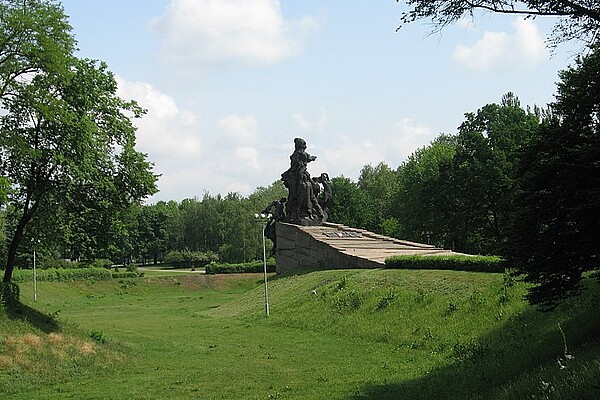
On 29 September 2016, at a ceremony dedicated to the 75th anniversary of the Babi Yar massacre, which claimed the lives of more than thirty thousand Jews in 1941, a declaration was signed in Kyiv that called for the creation of a Babi Yar Holocaust Memorial Center (BYHMC). The President of Ukraine Petro Poroshenko and the Mayor of Kyiv Vitali Klitschko attended the event and held speeches in commemoration, endorsing the project. Signatories of the declaration (who would later become members of the project’s supervisory board) included a number of famous Ukrainian and international figures, among them the Soviet dissident Natan Sharansky, former Polish president Aleksander Kwaśniewski, the Chief Rabbi of Kyiv and Ukraine Yaakov Dov Bleich, former German Minister of Foreign Affairs Joschka Fischer, the Ukrainian boxer (and brother to Vitali) Wladimir Klitschko, the rock musician Svyatoslav Vakarchuk, and several businessmen. Conceived of as an internationally recognized memorial, museum, and educational institution, the BYHMC proclaims in its mission statement that its goal is to contribute “to the vision of [a] democratic and resilient society on the foundation of an elaborated and common picture of history.”
Yet, the project has not received unanimous support in Ukraine. Concerns have been raised by a number of scholars of Jewish history and the Holocaust, Jewish organizations, as well as by various Ukrainian academics and public institutions, some of whom have resorted to explicit accusations against the administration and sponsors of the project. Opponents see the project either as a form of Western intervention imposing unacceptable historical viewpoints, or as yet another means for Russia to interfere in domestic Ukrainian affairs to damage its reputation abroad. To contextualize the controversy which has erupted around the new project, a look at both the history of Babi Yar as a commemorative site and recent developments in Ukrainian memory politics is required.
Babi Yar (in Ukrainian: Babyn Yar), located in the north-western part of Kyiv, has become a major symbol of the Holocaust inside and outside of Ukraine. Prior to the war, several cemeteries, including a Jewish one, were located in Babi Yar and its surrounding area. During the Nazi occupation of Kyiv from 1941 to 1943, Babi Yar became the site of mass executions, including the most notorious massacre on 29 and 30 September 1941, as Nazi authorities murdered those individuals it considered racially or politically alien. In two days, various Nazi SS, police, and Wehrmacht regiments executed 33 771 Jews, throwing their bodies into a mass grave. To date, historians have uncovered about 100 000 victims (estimates range from 70 000 to 120 000) at Babi Yar and its vicinity, which included the Syrets ‘re-education camp’. Of these victims, approximately two thirds were Jewish, while the remainder was comprised of Romany victims, Soviet prisoners of war and underground activists, Ukrainian nationalists, psychiatric patients, and religious figures.
During the Soviet years, the fate of the killing site was twofold: On the one hand, Soviet authorities reorganized much of the space, building a metro station and a TV broadcast centre, among other buildings, largely disregarding the cemeteries and the mass burial site. On the other hand, in 1976, the authorities inaugurated a large monument dedicated to “Soviet citizens and prisoners of war and officers of the Soviet Army shot by the German fascists at Babi Yar”. This monument was in line with traditional Soviet Holocaust commemoration, which did not single out Jews as the primary victims, subsuming them under the umbrella of Soviet citizens/civilians.
In the post-Soviet years, the Babi Yar area witnessed a proliferation of about thirty monuments and memorial plaques. The majority of these were the result of private initiatives, including the Menorah monument which was unveiled at Babi Yar in 1991. Other monuments followed, dedicated to Ukrainian nationalists, Orthodox priests, the Romany, children, Ostarbeiter (forced laborers), and victims of the 1961 Kurenivka mudslide. The Babi Yar area has become a multi-layered memorial site, even comprising monuments dedicated to victims of Nazi violence whose relationship to the site itself is still a matter of debate. For instance, two monuments are devoted to members of the Organization of the Ukrainian Nationalists (OUN) murdered by the Nazis, although there is still some controversy as to whether they were killed or buried in the Babi Yar area.[1]
Holocaust commemoration at Babi Yar since 1991 has mostly been a story of good intentions and unrealized planning initiatives. While there has been a recurring desire over the past three decades to create a memorial centre or a museum at Babi Yar, the realization of any such plans has thus far failed. This failure stems both from the conflict between various international and Ukrainian Jewish organizations over how to commemorate the Babi Yar tragedy (and who will manage the ensuing memorial centre), and from the ambiguous attitude of Ukrainian political elites toward Holocaust commemoration as a whole. The difficulties surrounding Holocaust commemoration in Ukraine expose two key fault lines. First, the question of competing ‘collective victimhood,’ a prevalent subject of national narratives throughout Central and Eastern Europe: State-sponsored historical narratives in Ukraine, both the nationalist and the Soviet nostalgic, underscore and exploit the historical victimhood of local people, with a particular emphasis on ethnic Ukrainians. In contrast, Holocaust commemoration foregrounds the tragedy of Jewish Ukrainians, a minority whose position in national narratives has either been relegated or neglected entirely. Second, and perhaps even more decisively, the history of the Holocaust raises the issue of complicity and the active collaboration of the local population and local political actors in anti-Jewish violence. Particularly controversial in this context is the role of the OUN and its military wing, the Ukrainian Insurgent Army (UPA). While they are glorified today by a significant part of the (mostly Western) Ukrainian population, as well as by influential groups within the political elite, as “fighters for independence,” most scholars and experts on Ukraine agree that the OUN, alongside members of the local population, participated in anti-Jewish violence, as well as joining certain Nazi organizations during the occupation.[2]
Memory politics in independent Ukraine have weathered a number of controversies – in large part due to strongly diverging assessments of the Soviet period, the OUN-UPA, and the Second World War within Ukrainian society. The controversy around the planned memorial centre at Babi Yar, which erupted in late 2016 and continues to this day, must be interpreted not only against the backdrop of a complex and painful history but also within constantly shifting developments in memory politics. The events of the so-called Euromaidan, which toppled the previous Ukrainian government and brought in a new one, the annexation of Crimea, and the military conflict in Eastern Ukraine have all come together to create a new context for those thinking about Holocaust memory. The new Ukrainian government has explicitly embraced a pro-Western orientation and a platform of European integration, while also tapping into a more nationalist trend within memory politics, which is itself deeply intertwined in the conflict with Russia and pro-Russian groups in Crimea and Eastern Ukraine. This trend is reflected in a strengthening of Ukrainian nationalist rhetoric among government officials, in new legislation regarding the public representation of the Soviet past, as well as in the increased mobilization of nationalist and far-right groups. The symbols and slogans of the OUN-UPA have become widespread, and for parts of society they signal a clear loyalty to the Ukrainian nation. Yet, for the top echelon of the post-Euromaidan political elite, this resurgent nationalism in memory politics serves a pragmatic purpose: to maintain power by co-opting the nationalist agenda from non-state nationalist groups. The post-Euromaidan government has led a campaign against the part of Ukraine's memory cultural landscape that has been primarily based on elements of Soviet nostalgia and was emboldened by the confrontation with Russia and Russian-backed separatists in Eastern Ukraine, who themselves appeal to numerous symbols from the Soviet era and the Great Patriotic War.
The central state institution of post-2014 memory politics is the Ukrainian Institute of the National Memory (INM),[3] headed by Volodymyr Viatrovych, a historian by training, known for his sympathies to the OUN. He and his associates deny the OUN’s participation in the Holocaust and promote the history of the OUN as an inclusive organization. Their denial includes promoting narratives about Jews who were actively involved in and shared the values of the OUN – a claim that has been called an “invention”.[4] The Institute under Viatrovych has become the source for multiple controversial projects and declarations, among them the notorious decommunization laws that were adopted in 2015. One of these laws prohibits the denigration of the “fighters for the independence of Ukraine,” and contains a list of “national heroes,” which includes several controversial members of the OUN-UPA.
Although the announcement of the new Babi Yar Memorial Center appealed to the pro-European orientation of the new government, it was in many respects at odds with the memory policies promoted by the INM. To be sure, the Memorial Center (with its high-profile international council) would raise the international prestige of Ukraine and its government in a context where Holocaust commemoration remains one of the key moral indicators for membership in the ‘European family.’ This may have been part of the rationale behind Petro Poroshenko’s endorsement of the project; in fact, compared to structural reforms, Holocaust commemoration may have even been considered an easier way to score points in the eyes of European partners. For the “pro-European” Ukrainian government, endorsing a private initiative for the creation of the BYHMC was also a useful way to divert attention from its more controversial historical policies, particularly in relation to the glorification of the OUN. At the same time, it was more or less clear from the beginning that the Center would spur uncomfortable discussions about local participation in the Holocaust.
In 2017, the BYHMC’s organizing committee elected an international academic team to illuminate the main historical narrative of the new Memorial Center. This academic council consisted of well-known international and Ukrainian scholars, headed by the Dutch specialist on the Nazi rule in Ukraine, Karel Berkhoff. The international and high-profile composition of both the supervisory board and the academic council reflected the aim of creating an institution of international scale and reputation.[5] 2017 also marked the first wave of the criticism of the new initiative, whose main proponents were Ukrainian scholars inside and outside the INM, but also representatives of Ukrainian Jewish organizations not directly involved in the BYHMC project. Among the most outspoken critics were Anatoliy Podolskyi, the director of the Ukrainian Center for Holocaust Studies, Vitaliy Nakhmanovych, historian at the Museum of Kyiv History and the executive secretary of the “Babyn Yar Committee”, Josef Zissels, a Soviet political prisoner and Chairman of the Ukraine Association of Jewish Organizations and Communities, as well as the INM’s director Volodymyr Viatrovych. Their outspoken critique may have stemmed from being side-lined from the discussions about the new centre. Perhaps, as scholars specializing in the Holocaust, as leaders of Jewish organizations, and as representatives of the main Ukrainian state memory institution, they felt that they should have a major say in any memorial project at Babi Yar. Moreover, roughly at the same time, many of the critics were involved in another project in the area: an architectural contest for the “Babyn Yar—Dorohozhychi Necropolis” memorial park. The announcement of the BYHMC project, with its international academic council, infringed on their perceived monopoly over the commemoration of Babi Yar victims. Moreover, while some members of this very diverse group of BYHMC opponents may have been motivated by ideological disagreements over how best to commemorate the events at Babi Yar, in other cases, it may simply have been more mundane reasons of prestige, power, and access to resources that formed the backbone of their opposition.
There were several dimensions to the criticism voiced: Some highlighted a Jewish tradition that prohibited the construction of any buildings over burial sites. The BYHMC administration countered this claim by carefully selecting the location of the new centre, receiving the approval of the Chief Rabbi of Israel. Other opponents of the BYHMC criticized the future centre’s focus on the Holocaust, arguing that Babi Yar was a killing site for various victims, not only Jews. In response, one suggestion was to create a Holocaust centre elsewhere, while the Babi Yar museum would cover the entire history of the place, not only its Jewish dimension. Although the intention to commemorate all victims of Babi Yar may have be commendable, there is a danger of slipping into the commemoration of everyone but no one in particular, an approach which bears some resemblance to the previous Soviet memorials. The exhibition “Babyn Yar: Memory against History’s Background”, created by the BYHMC opponents, demonstrates the outcome of such elisions, as it speaks only briefly about the Jewish dimension of the Babi Yar killings.[6]
The main criticism, though, was aimed at the “foreign” character of the BYHMC. In a milder version of this condemnation, the new project was called “paternalistic” and “post-colonial”. The international character of the supervisory and academic teams suggested to critics that both the centre and its future exhibition would be largely imposed from the outside, ignoring the opinions of local specialists (primarily the critics themselves) and the interests of Ukrainian society. Supporters of this interpretation lamented the condescending attitude of their Western partners.[7]
Other criticism of the BYHMC project focused on the fact that some of its sponsors have economic ties with Russia. In an interview, INM director Viatrovych stated that he was concerned with the “Russian money” involved in the project.[8] Nakhmanovych claimed in another interview (also available in English) that the BYHMC would become a “springboard for the Russian World (Russkiy Mir)”.[9] Finally, in an open letter of concern, published both in Ukrainian and English in March 2017, a group of Ukrainian scholars, including Nakhmanovych and Podolskyi, warned that the painful subject of the Holocaust might become a way to “advance the neo-imperialist ideas of the Russian World”. They saw cause for such concern in the fact that the majority of businessmen who supported the BYHMC project and were part of its supervisory board did much of their business in Russia. In particular, they named the Ukrainian-born “Russian billionaires” Pavlo Fuks, Mykhaylo Fridman, and German Khan, all three of whom are of Jewish origin (which might suggest a personal interest in sponsoring and promoting the BYHMC project). By calling them “Russian” (and also largely ignoring the fourth businessman, Viktor Pinchuk, whose business dealings are conducted mostly within Ukraine) in their effort to delegitimize the project, the signatories of this letter drew a direct link between historical research, commemoration, and the current political situation. They conclude that memoralization at Babi Yar should be primarily a task of the Ukrainian government and not of private foundations with international participation. This claim underscores their perception of memory politics and history as a matter of state interest and even national security, particularly in the post-2014 context. Moreover, using their connections to the Ministry of Culture and the resources of the INM, the opponents of the BYHMC launched parallel commemoration projects, organizing the previously mentioned exhibit “Babyn Yar: Memory against History’s Background”, producing a documentary film, and publishing a guide for teachers on “Babyn Yar: Memory and History”. The existence of parallel projects and competing institutions, all carrying the name “Babi/Babyn Yar” in their title, was a recurring issue and one of the key impediments to the realization of previous commemorative projects.
The interconnection of politics and history and the disagreements over the role of the envisaged Babi Yar Holocaust Memorial Center were most evident in the debates over the representation of the local participation in the Holocaust and of other forms of collaboration. The centrality of the issue was evident in the early criticism of the project and became even more explicit at a public hearing organized by the BYHMC about the basic historical narrative, which took place at the Taras Shevchenko National University in Kyiv in early 2018. The “basic narrative”, elaborated by the scientific council in collaboration with international and Ukrainian scholars, makes the issue of local participation one of the central motives of the future exhibition.[10] Rather than externalizing all responsibility onto Nazi Germany, this narrative addresses the complex issue of local participation in the Holocaust and highlights the dangers of antisemitism among the local population as well. In addition, by presenting those cases in which the local Ukrainian population helped and saved their Jewish neighbours, the spectrum of options available even in the most extreme circumstances could be demonstrated. This approach falls in line with the pan-European approach to Holocaust commemoration and education, which stresses shared European responsibility for the tragedy. This approach underlines the primary responsibility of Nazi Germany, but also, to a lesser extent, the responsibility of the local populations which fell under Nazi rule. It should also be noted here that one of the key tracks in international Holocaust research in recent decades has been on local participation in anti-Jewish violence.[11] As such, it should not come as a surprise that the BYHMC’s international scientific council was willing to introduce this dimension into the Center’s historical narrative, as it was part of these scholars’ own research. The issue has also been discussed within Ukrainian academic debates, but the larger population’s familiarity with this history is likely limited.
Yet at the hearing, the critics of the BYHMC took issue with the (in their opinion) excessive focus on local participation in the Holocaust.[12] Viatrovych found the narrative’s emphasis on anti-Semitism among the local population misleading, as in his view this placed Ukraine and Ukrainians at the centre of the Holocaust, affording it too great a responsibility. He also deemed the use of the term “collaborationism” as unfitting for the wartime circumstances of the Ukrainian territories. Nakhmanovych was even more outspoken, concluding that the presented narrative was “pro-Kremlin” and “anti-Ukrainian”. The perception of the BYHMC project as a threat to Ukrainian national security was also apparent: The emphasis on the local participation in the Holocaust presented Ukrainians as anti-Semites and Nazi collaborators – just as Russian media outlets already did – making the basic historical narrative of the BYHMC not only questionable, but also outwardly harmful to Ukrainian national interests.
Unwilling to lay any sizable responsibility for the Holocaust on the local population, opponents of the BYHMC proposed to blame others, beginning with the Nazis. The BYHMC’s basic historical narrative in no way exonerates the Nazis, but takes note of local participation as well. The allegation that this narrative almost entirely ignored the Nazi factor in order to place the responsibility for the Holocaust on local Ukrainians is thus misleading. During the hearing, one critic, Josef Zissels, emphasized the responsibility of the Soviet Union for the Holocaust. In an article that carries echoes of Ernst Nolte’s arguments during the German Historikerstreit in the 1980s, Nakhmanovych further claimed that Bolshevism, the Soviet Union, and the Comintern led to rise of the popularity of Nazism and its eventual political takeover.[13] Thus in this narrative, the responsibility for the Holocaust lay with Nazi Germany and the Soviet Union, leaving the local Ukrainian population as victims, not as perpetrators of anti-Jewish acts.
Aside from the rather evident struggles over power, resources, and authority in memory issues in Ukraine, the controversy surrounding the BYHMC and the debates over commemoration in Babi Yar highlight two fundamentally different approaches and visions of Holocaust memoralization and memory politics in Ukraine in general. Whatever the agenda of the private sponsors – the “Russian oligarchs” as they were called by critics, the BYHMC administration and scientific council’s declarations and activities over the past two years have demonstrated an intent to create an internationally-oriented memorial, research, and educational centre that does not shy away from addressing issues of local participation in the Holocaust. They present it as an important step in the development of a democratic and tolerant Ukrainian society on the road to European integration. The fact that leading figures in official Ukrainian memory politics, including the INM, were left out of the governing and academic structures of the BYHMC hints at a certain unease within the BYHMC leadership with recent memory political tendencies in post-Euromaidan Ukraine. Overall, the approach chosen by the BYHMC is supported by the international Holocaust research that stresses the shared responsibility for the Holocaust, without diminishing the primary responsibility of Nazi Germany.
At the same time, the opponents of the BYHMC fear that publicly exposing a negative side of Ukrainian history can only weaken Ukraine as it faces the current military conflict in the East and various disinformation campaigns by Russian-backed separatists. They outline an alternative narrative which places the responsibility for the Holocaust purely on Nazi Germany and the Soviet Union. In this version, Ukrainians in the Second World War are either victim.[14] or heroes struggling for Ukraine against overwhelming and monstrous invaders. The ‘double occupation’ paradigm and the focus on self-victimization is widespread in Central and Eastern Europe, particularly in Poland and the Baltic states. Moreover, several declarations and resolutions by the European Parliament, the Parliamentary Assembly of the Council of Europe, and by the OSCE Parliamentary Assembly have in one way or another endorsed this narrative on an pan-European level. In the current political situation in Ukraine, critics of the BYHMC consider the double occupation narrative and the focus on Ukrainian, rather than Jewish, victimhood in the Second World War as more useful. The ambiguity of the term “Ukrainians” which can refer both to ethnic Ukrainians and to the multi-ethnic population of Ukraine, allows some to avoid of the inconvenient issue of interethnic relations during the Second World War as well as the commemoration of the latter.
In March 2018, despite the criticism encountered, the BYHMC signed a multilateral memorandum of cooperation with the Ministry of Culture, the Ministry of Education and Science, the Kyiv City State Administration, and the National Historical Memorial Preserve “Babyn Yar”. To what extent this support is indeed driven by a commitment to the ideals of democracy, pluralism, and transparency can be debated. Some leading Ukrainian politicians may also see a collaboration with the BYHMC as an opportunity to divert attention from both their more questionable international reputation with regard to important reforms, or from controversies within Ukrainian memory politics. Indeed, recent manifestations of “state-sponsored Holocaust distortion and denial” in Ukraine have raised concerns among Western allies.[15] In this context, any attempts by the authorities block the creation of an international Memorial Center at Babi Yar could damage Ukraine’s international reputation even further.
At the same time, there is little evidence to suggest that the political elite in Ukraine does not support the current trends in official memory politics, and the nationalist rhetoric emanating from the INM. With continued government support for nationalist trends, the competition between these two approaches to Holocaust commemoration is quite likely to continue. Considering the timeline of the BYHMC project, with its opening slated for 2023, it is entirely possible that the nationalist approach to the memory of the Holocaust in Ukraine will have gained even more ground.
_________________________________________________________________________________________________
The article was written with the support of a Russian Science Foundation grant, RNF project 17-18-01589
Alexandr Voronovici: At the Crossroads of "Memory Wars": Recent Debates on the planned Babi Yar Holocaust Memorial Center. In: Cultures of History Forum (07.08.2018), DOI:10.25626/0087.
Copyright (c) 2018 by Imre Kertész Kolleg, all rights reserved. This work may be copied and redistributed for non-commercial, educational purposes, if permission is granted by the copyright holders. For permission please contact the editors.
The official website of the Babi Yar Holocaust Memorial Center
See also the related article by the author on 'Politics of Memory, Kyiv Style' published by Russia in Global Affairs (27.12.2017).
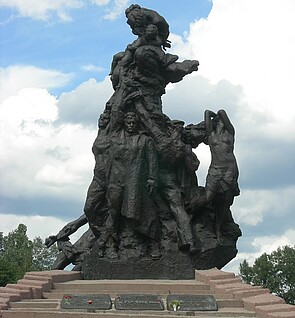
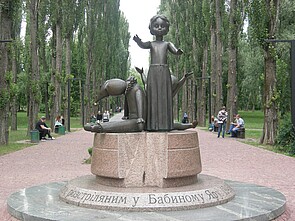
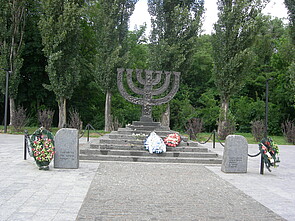

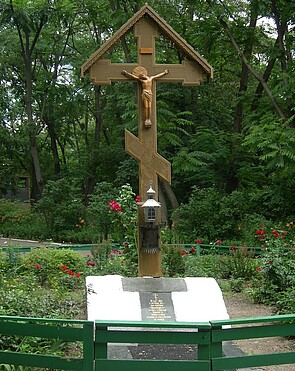
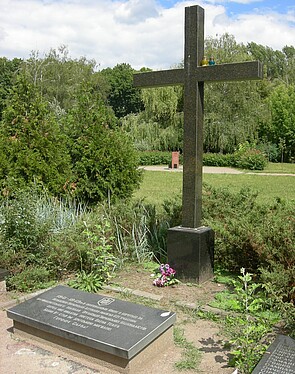
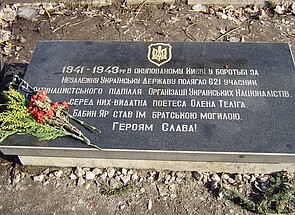
Viktoriia Nechyporuk · 13.12.2024
A Trident on the Shield: Ukraine’s Decommunization Strategy and the Case of the “Mother Ukraine” Sta...
Read more
Alexandr Voronovici · 12.08.2023
Separatism and the Uses of the Past: Politics of History in the Self-Proclaimed Republics of Donbas
Read more
Jeremy Cohen · 25.01.2023
Vladimir versus Volodymyr: Conflicting Russian and Ukrainian Application of Rus’ Heritage
Read more
Laura Eckl and Jan C. Bever · 31.08.2020
Ambivalent Memories: Commemorating 8 and 9 May in Kharkiv, Ukraine
Read more
Andrii Nekoliak · 16.01.2020
Towards Liberal Memory Politics? Discussing Recent Changes at Ukraine’s Memory Institute
Read more
Get this article as PDF download (including pictures).